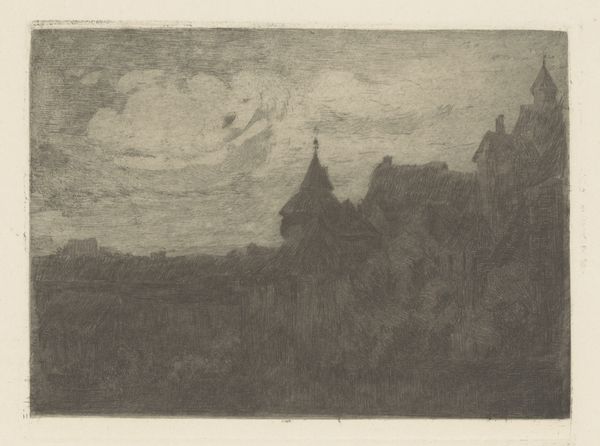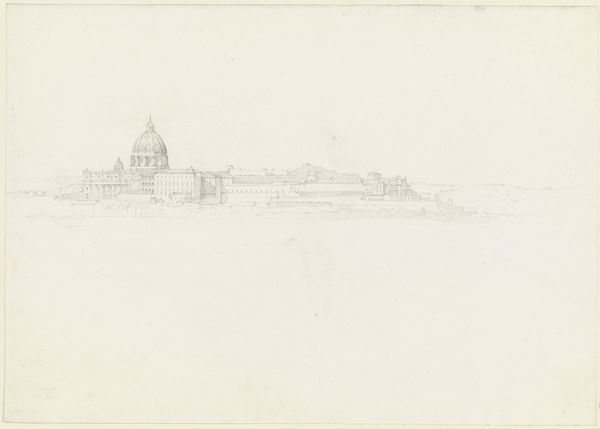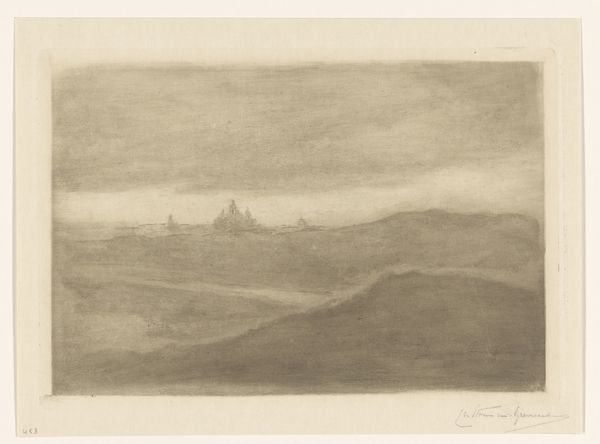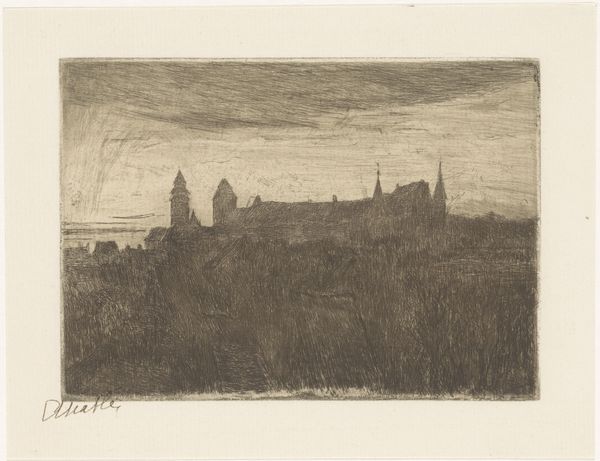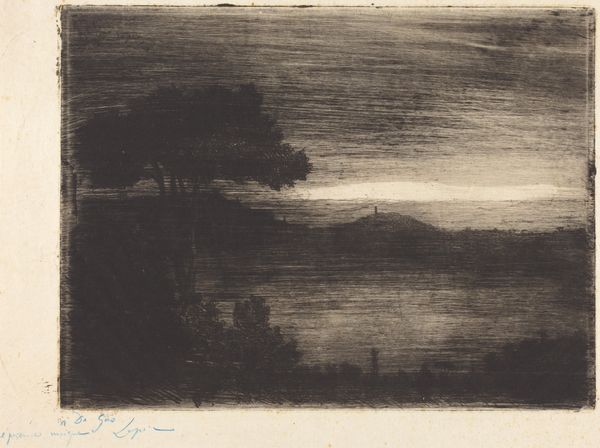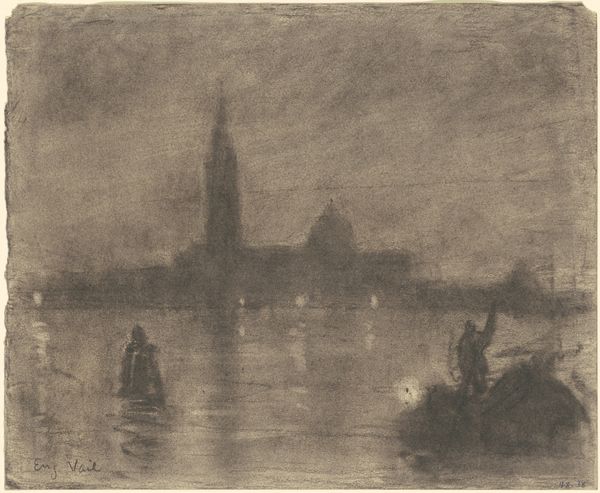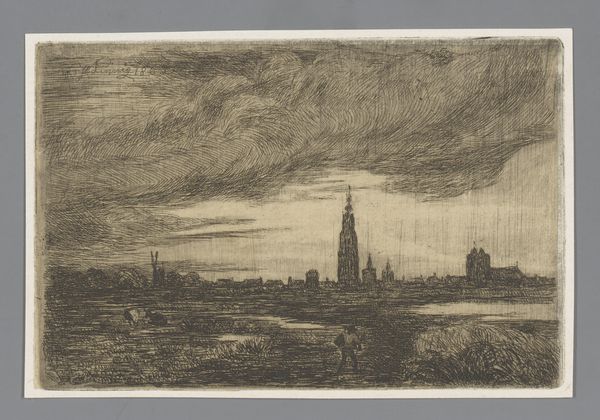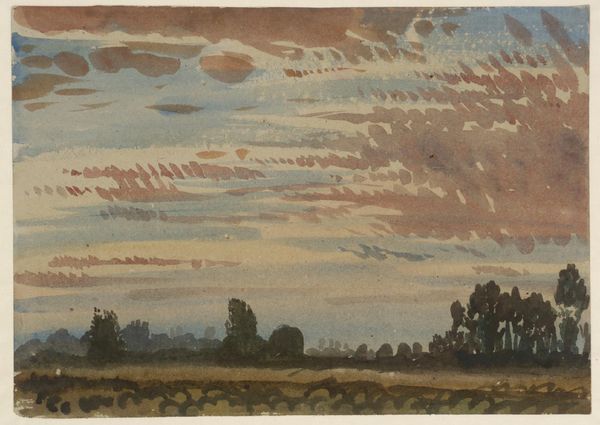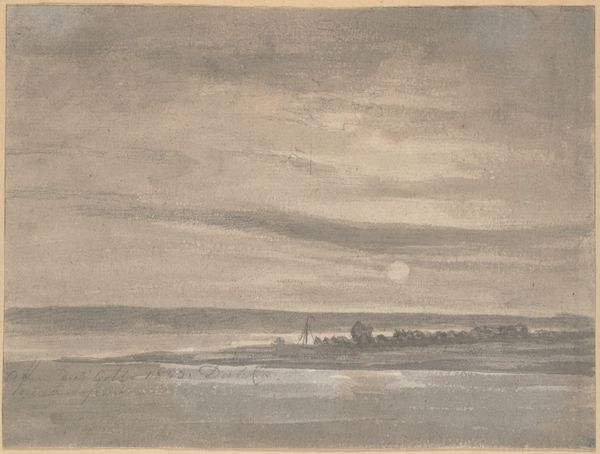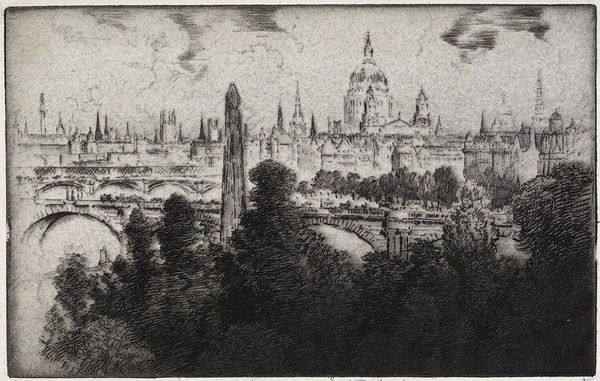
Saint Peter's Seen From the Pincio, Rome 1830 - 1916
0:00
0:00
Dimensions: 6 5/16 x 14 5/16 in. (16 x 36.4 cm)
Copyright: Public Domain
Curator: Henri-Joseph Harpignies, likely working in the late 19th or early 20th century, created this work entitled "Saint Peter's Seen From the Pincio, Rome". It is currently held at the Metropolitan Museum of Art. Editor: Immediately, I am struck by the somber mood; a sort of melancholic stillness hangs over the cityscape. The looming clouds contribute heavily, wouldn't you agree? Curator: The cloud formations are certainly essential compositional elements. Note how their shapes mirror the rounded form of the basilica's dome, creating a visual echo. Furthermore, the use of watercolor imbues a certain lightness that softens what would otherwise be quite harsh lines. Editor: St. Peter's dome itself carries such enormous weight, not only structurally, but symbolically. It signifies the heart of the Catholic Church, visible for miles as a physical manifestation of spiritual power. But here, it feels almost subdued. Curator: Precisely. The values are deliberately muted. Consider the relationship between light and dark--the darker foreground leads the eye toward the lighter, more ethereal background where the basilica resides. Editor: As the presumed location is Pincio Hill, I'm thinking the figures are purposely omitted; to leave the scene as an observer, not as a participant. Even more intriguing when you consider that, typically, the basilica, a symbol of spiritual enlightenment, is a vibrant space. The overcast and color story choice is making it representative of spiritual gloom. Curator: The artist uses layers of translucent washes to create depth, and he masterfully handles the transition from the solid earth to the atmospheric sky. What meaning do you extract from that deliberate transition? Editor: I’d wager that the soft edges between buildings, the basilica, the skies--speak to the fleeting nature of life, how moments, memories, and power structures inevitably fade, become obscured with the passage of time. It becomes another ruin of sorts, still imposing and inspiring, but one touched with transience and memory. Curator: A convincing reading, though I find equal interest in simply parsing the formal aspects. For instance, observing the stark contrast between the horizontal lines of the city and the diagonal strokes of the rain… Editor: Indeed, a lovely dichotomy! Regardless, it is in these juxtapositions that this piece earns its emotive power. Curator: Agreed. And it provides a window into Harpignies’ formal ingenuity as an artist of the landscape.
Comments
No comments
Be the first to comment and join the conversation on the ultimate creative platform.
